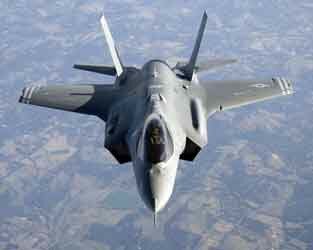abbiamo speso 17 miliardi per aerei difettosi


|
|
April 7, 2012 (by Eric L. Palmer)
- Canadian Defence officials have been accused of misleading Parliament
over the proposed F-35 Joint
Strike Fighter (JSF) acquisition after the release of an Auditor General
report this week.
Back in February 2011, Canadian Defence Minister Peter
MacKay stated the following about the troubled F-35 program, which had
a limit of $9B for the procurement of 65 F-35s.
- ”Many figures have been circulated on the cost,”
the minister said in a speech Friday before the Conference of Defence Associations.
”Let me repeat it. $9 billion. I have no idea where these other figures
are coming from. They’re simply made up — or they’re guessing.”-
Adding 20 years of maintenance at a cost of $7B for a total of $16B was what Defence claimed for the total capability. Defence proponents of the F-35 stated that the project was likely to come in under that total number; closer to $14.7B.
The Canadian Auditor General report asserts that Defence had known that the total program costs would be $25B. The report also claims that Defence officials kept this figure from elected officials. There is also the possibility that the current government buried this higher figure in order to keep controversy away from the program during the last election.
When news of the contents of the Auditor General report leaked out some weeks ago, Defence Minister Mackay reasserted that $9B is the limit for acquisition for a CF-18 Hornet replacement.
The Canadian government has also released its latest budget plan. In it, it states that a CF-18 replacement has to be "affordable". It also states that operations undertaken by this capability will be for at home and abroad.
It is unlikely that 65 aircraft are enough to sustain home defence operations and contingencies abroad. 72 aircraft (as a minimum) for a CF-18 replacement is a more solid number if operations abroad are confirmed as being needed by Parliament. Years ago at the start of the program, Canada stated they needed 88 F-35s.
As a result of the Canadian Auditor General report, the acquisition management responsibility for a CF-18 replacement will be taken away from Defence and handed over to the Public Works department.
The Montreal Gazette reports this response from Defence:
-In a statement issued later Thursday, the government
said it was reporting the cost of purchasing the stealth fighters, and
did not roll in operating and salary costs because they would have been
incurred no matter what aircraft was chosen to replace the CF-18s.-
This is misleading or just demonstrates the kind of poor advice given to the minister. There was nothing wrong with the stated categories of acquisition and maintenance produced by Defence. What was wrong were the rosy assumptions of affordability with no clear evidence to back it up given the immaturity of the F-35 program.
For instance, Defence Minister MacKay was told that the unit cost of the aircraft was in the $70M region and that Canada would be purchasing their aircraft during "peak-production" in the program. These talking points also show up on the Canadian Defence website. Unfortunately, there is no sold information to verify such a scheme. Reports from the U.S. Government Accounting Office (GAO)--an organisation that has been consistently accurate about program risks--doesn't agree with Mr. MacKay's claims.
Also, Canada expects to replace their CF-18s by the year 2020. There are so many known risks tied to the F-35 program that it won't be in any go-to-war configuration by then. If anything, the very nature of F-35 program risks to cost, technical problems and schedule disqualify it as a CF-18 replacement.
Canadian Defence officials also state they have been routinely briefed by the U.S. Department of Defense (DOD) F-35 program office. However this very office has been if anything, suffering from over-optimism and no solid program management methodology. For example, one of the previous DOD F-35 program bosses General Davis was consistently wrong in almost all of his program briefings on risk, schedule and cost up to and through the year 2008 and until he left the posting. His replacement was fired for over-optimism. And, the current program boss, Admiral Venlet, has gone native to the program stating things are fixable when the current pile of massive risks show that to be unlikely.
Current political fallout from the results of the Canadian
Auditor General's report will take a long time to resolve.
E dunque il governo Monti sapeva ma non ha informato
i cittadini quando, nel febbraio del 2012, nel bel mezzo di una crisi economica
senza precedenti,
il ministro “tecnico” della Difesa, Giampaolo Di Paola,
aveva annunciato pomposamente che l’Italia avrebbe acquistato solo 90 F35,
invece dei 131 inizialmente prenotati, così
da ottenere un risparmio di cinque miliardi di euro: una clamorosa menzogna,
smentita dalla preoccupante
escalation dei costi prevista nel rapporto americano,
di cui il ministro “tecnico” (?) Di Paola era già a conoscenza e
che ha volutamente omesso.
Un genio: 17 miliardi di euro (di cui 2 miliardi e
mezzo già pagati alle imprese) per 90 caccia non solo inutili ma
anche difettosi. E adesso chi paga?
 |